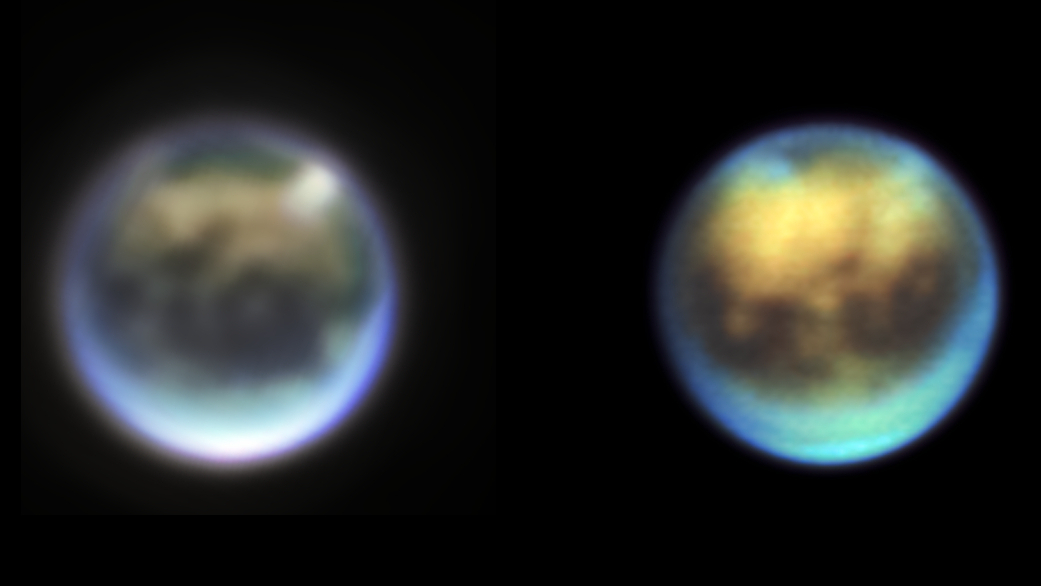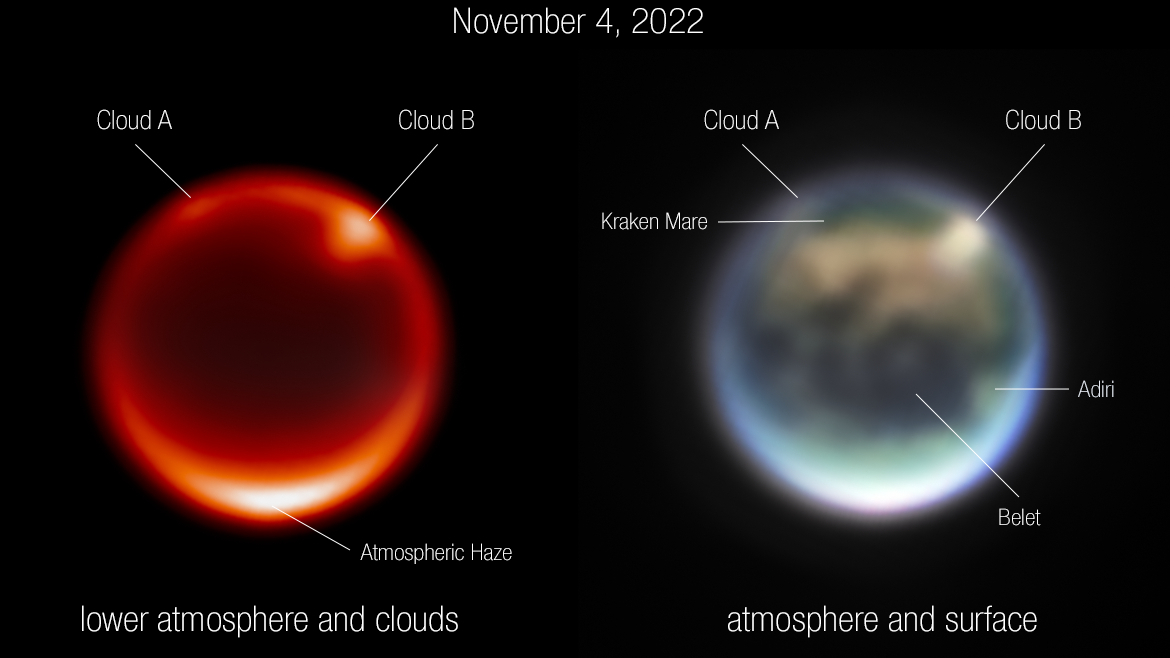James Webb Space Telescope captures 'extraordinary' clouds in the atmosphere of Saturn's alien moon Titan
Studying Titan's clouds will help scientists understand why Saturn's largest moon is the only moon in the solar system with an atmosphere.

Scientists spotted something exciting on Saturn's moon Titan in images taken by NASA's James Webb Space Telescope in early November — clouds. Specifically, clouds in Titan's northern hemisphere.
To a casual observer, clouds might be a dime a dozen. But to scientists, clouds can reveal a lot about the atmosphere of a planet (or in this case, a moon). Titan is the only moon in the solar system with a thick atmosphere, so studying clouds helps scientists understand how Titan's atmosphere works — and why it has an atmosphere in the first place.
"At first glance, it is simply extraordinary! I think we're seeing a cloud!" said Sébastien Rodriguez, a planetary scientist at the Universite Paris Cité, in an email to the Titan observation team at NASA's Goddard Space Center in Greenbelt, Maryland. The email was included in a NASA statement about the images.
Related: What color is the sunset on other planets?

The clouds further validate weather models that predict the appearance of clouds in Titan's northern hemisphere during its summer, when the region is bathed in sunlight.
Scientists have eagerly been awaiting observations of Titan since NASA's Cassini mission ended after plunging into Saturn's atmosphere in 2017. Titan's atmosphere is thick with nitrogen and methane, stretching 370 miles (600 kilometers) into space, an altitude 10 times taller than Earth's atmosphere, according to NASA. At its outer edges, solar radiation breaks up the methane and nitrogen molecules, and the remaining pieces recombine into large organic molecules that create a rich, soupy haze. This haze blocks visible light, making it hard to observe Titan's lower atmosphere and surface. Fortunately, JWST's infrared cameras will be able to give scientists an unprecedented view of the moon's lower atmosphere and surface.
Although the Goddard team was excited about seeing clouds, the JWST images showed only one snapshot in time. To really understand how Titan's atmosphere works, researchers need multiple images to see how the clouds change shape. So the team turned to colleagues at an Earth-based telescope, the Keck Observatory in Hawaii.
Sign up for the Live Science daily newsletter now
Get the world’s most fascinating discoveries delivered straight to your inbox.
Thankfully, the clouds hadn't dissipated by the time Keck made its observations a couple days later.
"We were concerned that the clouds would be gone when we looked at Titan two days later with Keck, but to our delight there were clouds at the same positions, looking like they had changed in shape," said Imke de Pater, an emeritus planetary scientist at the University of California, Berkeley.
Titan captivates scientists for many reasons.For one, ultraviolet radiation from the sun creates huge organic molecules in Titan's nitrogen- and methane-rich atmosphere. That hazy atmosphere obscures a surface covered in vast fields of dunes, along with lakes, seas and rivers of liquid hydrocarbons like methane and ethane. And, deep underneath Titan's surface, scientists suspect a salty liquid water ocean lurks, making Titan a candidate for potential life beyond Earth.
The cloud images aren't the only data JWST returned in early November. Using data from the telescope's Near-Infrared Spectrograph, scientists will be able to study the composition of Titan's lower atmosphere, which can't be observed using ground-based telescopes like Keck.
That data, which the team is still analyzing, "will enable us to really probe the composition of Titan's lower atmosphere and surface in ways that even the Cassini spacecraft could not," the team said.

JoAnna Wendel is a freelance science writer living in Portland, Oregon. She mainly covers Earth and planetary science but also loves the ocean, invertebrates, lichen and moss. JoAnna's work has appeared in Eos, Smithsonian Magazine, Knowable Magazine, Popular Science and more. JoAnna is also a science cartoonist and has published comics with Gizmodo, NASA, Science News for Students and more. She graduated from the University of Oregon with a degree in general sciences because she couldn't decide on her favorite area of science. In her spare time, JoAnna likes to hike, read, paint, do crossword puzzles and hang out with her cat, Pancake.










